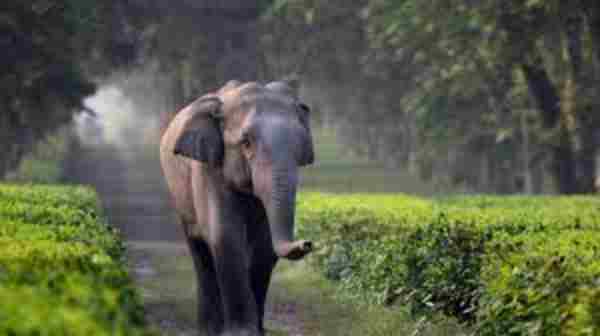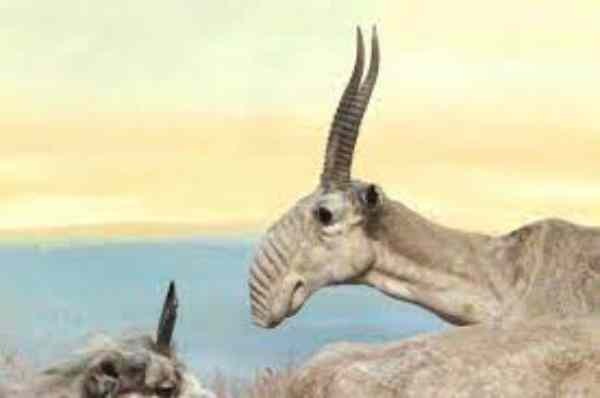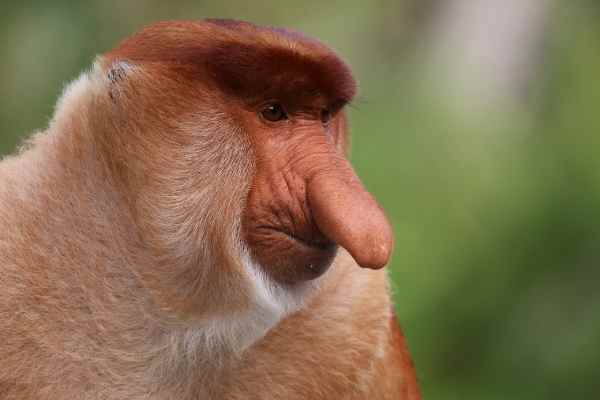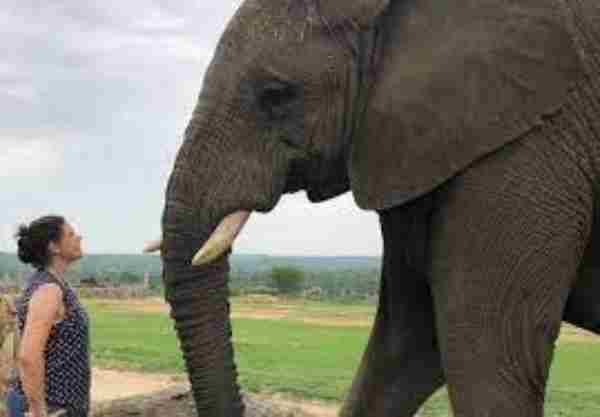When we think of animals with trunks, elephants are usually the first thing that comes to our minds. After all, they are the largest land animal with this unique feature. However, did you know that there are many other creatures that possess this handy appendage? From the tapir to the pig-nosed turtle, animals with trunks come in all shapes and sizes.
Table of Contents
While some animals use their trunks to eat and gather food, others use them to move objects or to communicate with their own kind. It’s fascinating to observe how these animals use their trunks in ways that are both practical and intriguing. Although they may not be as imposing as an elephant, these other animals with trunks serve an important purpose in their respective ecosystems.
Animals With Trunks
Elephants

The elephant’s proboscis, more commonly known as its trunk, is undoubtedly one of the most fascinating parts of its anatomy. With over 100,000 muscles and tendons, the trunk is incredibly robust and flexible, similar to a human hand. Standing four meters high, the elephant can use its trunk to reach for food in the trees and even uproot whole trees if it desires.
But the trunk is not just a tool for eating and destruction – it serves other purposes too. The elephant uses it to communicate, suck water for drinking, and even spray water over themselves or others nearby to cool down. Overall, the trunk is a vital extension that plays a significant role in the elephant’s daily life.
Tapirs

Imagine a creature that resembles a pig but is actually more related to horses and rhinos. That creature is a tapir. With its distinguishing feature, a short trunk that is an extension of its nose and upper lip, tapirs use it for both smelling and feeding. While primarily herbivores, they feed on plants every morning and evening by grabbing branches and fruits with their trunk.
Some tapir species even have slightly longer trunks adapted to holding things other than while eating. And like elephants, tapirs also enjoy spending time in water and mud. Overall, these unique creatures may have some similarities with other common animals, but they certainly stand out in their own unique way.
Saiga Antelopes

The saiga antelope is a unique creature with a distinctive feature that puts it on the list of animals with trunks. Its proboscis-like nose, which extends downward, serves as an adaptation to filter dust and warm the cold winter air. But that’s not all it’s good for. The male saiga roars to attract a mate, and the size of its snout directly correlates to the strength of its roar.
It’s a fascinating evolutionary strategy that ensures these antelopes select the best possible mate. Additionally, the nose acts as a form of communication, with the antelopes warning each other of potential danger. All in all, the saiga antelope’s unique attribute is a testament to the extraordinary ways animals have adapted to their environment.
Giant Anteaters

The giant anteater is a fascinating animal, being the largest of the four species of anteaters. They have a distinctive feature in the form of a long trunk with nostrils and a mouth at the end.
The trunk is solely used for eating termites and ants, as their diet consists entirely of these insects. Interestingly, the giant anteaters do not have teeth, but they have a long, strong tongue with which they can suck up to 30,000 ants per day from holes and mounds.
It’s amazing to imagine how much they can eat in just one day! Not only do they roam on land, but they also spend a good amount of time in the water, where they are excellent swimmers. The giant anteaters are truly unique animals, with their quirky eating habits and impressive abilities.
Elephant Shrews

Elephant shrews may have the name shrew, but they are not actually part of the shrew family. Recent evidence has shown that they are more closely related to aardvarks and sea cows. These fascinating creatures are small in size but have long trunk that extends their nose similar to that of an elephant.
The trunk is incredibly flexible, allowing them to move it in all directions, which they use to smell nearby predators for protection. These creatures’ habitats are located in African mountains and forests, where they feed on tiny insects like ants and moths.
With over 20 different species of elephant shrews, each with different colours and hobbies, they are indeed a unique part of the animal kingdom. Unlike their larger counterparts, these tiny mammals are often overlooked but are equally incredible.
Wild Boars

Wild boars have a short trunk that serves a dual purpose as their nose. Their pronounced sense of smell is pretty potent, helping them to detect predators in the wild.
Despite their relatively small size, wild pigs are incredibly powerful and dangerous. Humans must avoid getting too close to them, as they have been known to attack, injure, and even kill people and pets. However, wild boars are also hunted by humans for their meat, using unique spears called boar spears.
It’s amazing to think that such a small animal can be so fierce and dangerous to humans, but we must always remember to respect the wild and its inhabitants.
Elephant Seals

Elephant seals are fascinating creatures that can be found in both the northern and southern regions. However, the southern elephant seals steal the show when it comes to size, as they can weigh up to a whopping 8,000 pounds.
Interestingly, these animals get their name not from their weight, but from their unique trunks. Only male elephant seals have trunks, which they use in various ways. For instance, they inflate them to enormous sizes to scare off other male seals.
Additionally, they can produce sounds with their trunks that aid in communication or alerting others of danger. The trunks also come in handy during fights, as the seals use them to slap their opponents.
Proboscis Monkeys

Proboscis monkeys are truly fascinating creatures with their distinctive trunks that set them apart from others in the animal kingdom. These monkeys use their noses for a variety of purposes, from attracting a mate to expressing anger or issuing warnings to potential predators.
In particular, male probosci monkeys showcase their trunks when trying to win over a mate, puffing them up to show off their size and strength. And when they’re angry or threatened, they use their trunks to make loud noises and warn others to stay away.
But what’s even more impressive about these primates is their swimming abilities – despite their large noses, they are skilled swimmers, able to move gracefully through the water.
Aardvarks

The aardvark, also known as antbears, are fascinating sub-Saharan animals with distinct long snouts. Unlike other animals with long noses, the aardvark’s snout serves no other purpose than breathing and smelling.
Interestingly, these creatures can block their snouts willingly to prevent dust and insects from entering, especially while they are digging tunnels. Known to be nocturnal, aardvarks only come out at night to feed.
These opportunistic feeders survive mostly on small insects such as termites and ants, which they eagerly dig out of the ground with their impressively long claws.
FAQs
What animal has a trunk but not an elephant?
The tapir is an animal that possesses a trunk but is not an elephant. Tapirs are large, herbivorous mammals found in Central and South America as well as Southeast Asia. They have a flexible snout or trunk-like structure called a proboscis, which they use for various functions, such as feeding, grasping objects, and even as a snorkel while swimming.
Which animal is seen on trunks of trees?
The animal commonly seen on the trunks of trees is the woodpecker. Woodpeckers have specially adapted beaks and strong neck muscles that allow them to peck and drum on tree trunks. They do this to communicate, establish territory, search for insects hiding within the bark, and create cavities for nesting. The distinctive sound of a woodpecker drumming on a tree trunk is often heard in forests and woodlands.
Which animals have trunks and tusks?
The animals that have both a trunk and tusks are elephants. Elephants are known for their long, muscular trunks and large, elongated incisor teeth, commonly referred to as tusks. An elephant’s trunk is a versatile organ used for various purposes, such as breathing, smelling, touching, grasping objects, and drinking water. The tusks, which are elongated upper incisor teeth, can be found in both male and female elephants and are used for digging, foraging, defence, and display.
Final Words
Trunks in the animal kingdom serve many purposes, ranging from picking up food to blowing water on themselves for cooling off. Elephants, for example, have the most prominent trunks in the wild, and it’s not hard to see why they top this list. Their trunks are incredibly versatile, enabling them to pick up objects as delicate as a blade of grass or as heavy as a tree trunk.
Reference:
- https://www.britannica.com/science/trunk-zoology
- https://www.biooekonomie-bw.de/en/articles/news/the-continent-of-trunk-animals
- https://www.worldwildlife.org/stories/what-is-ivory-and-why-does-it-belong-on-elephants

Zahra Makda
Growing up enjoying the beauty of my village, a good passion for nature developed in me from childhood. Following my passion for the natural world, I have chosen zoology for my graduation, during my undergraduate degree, I participated in many nature trails, bird watching, rescues, training for wildlife conservation, workshop, and seminars on biodiversity. I have a keen interest in invertebrate biology, herpetology, and ornithology. Primary interests include studies on taxonomy, ecology, habitat and behavior.









